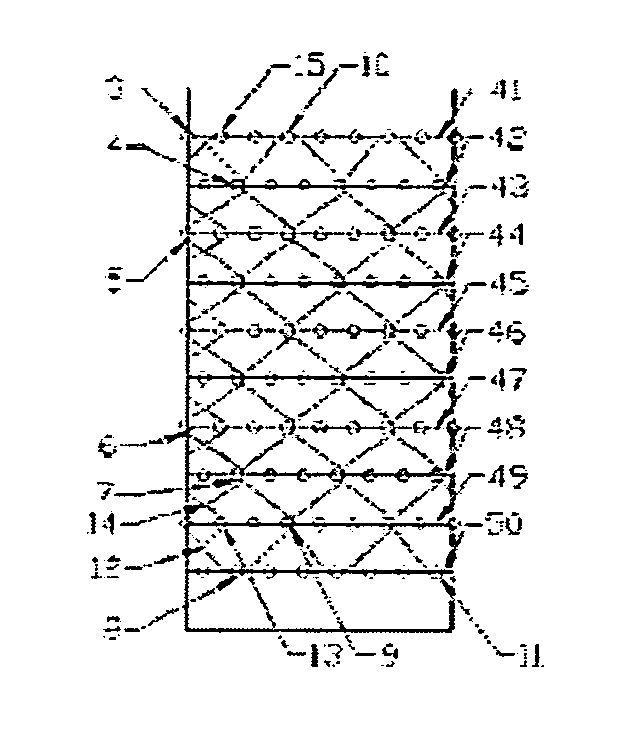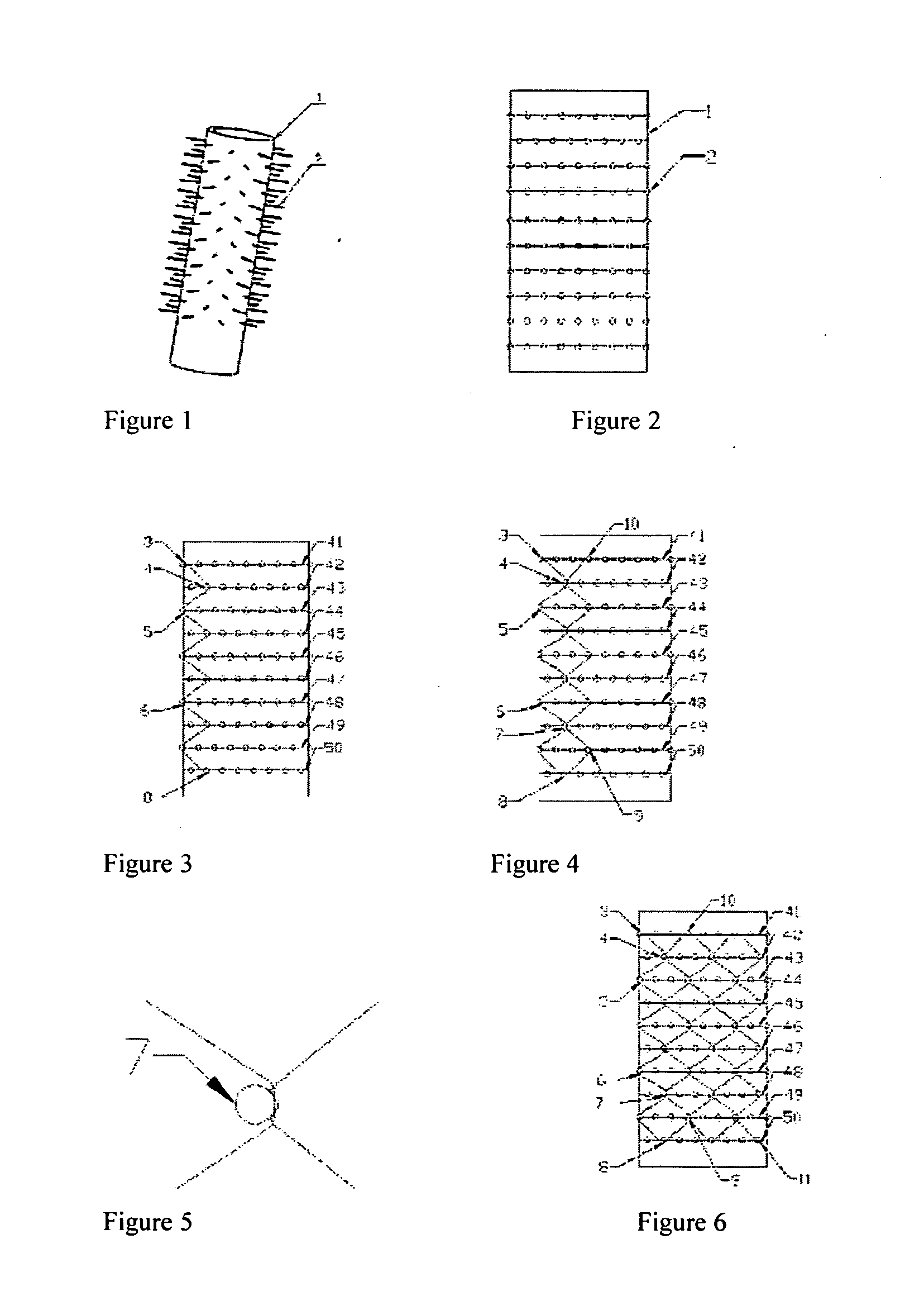Braided Self-Expanding Endoluminal Stent and Manufacturing Method Thereof
a self-expanding, endoluminal technology, applied in the field of medical instruments, can solve the problems of sudden limb pain, sudden limb pain, skin temperature drop, etc., and achieve the effects of reducing shortening, accurate positioning, and easy control
- Summary
- Abstract
- Description
- Claims
- Application Information
AI Technical Summary
Benefits of technology
Problems solved by technology
Method used
Image
Examples
first embodiment
The First Embodiment
[0061]FIG. 1 shows a pin jig required for manufacturing this endoluminal stent. This pin jig comprises a mandrel 1 with round holes and pins 2 inserted into the round holes. On the mandrell, there are eight round holes in each circle along the circumferential direction of the side wall, the azimuth angle of round holes on two adjacent circumferences are staggered, and each of the pins 2 is fixed into one round hole of the mandrel 1, respectively. FIG. 2 is a schematic diagram of the mandrel 1 of FIG. 1, with the lateral surface thereof unfolded into a plane. The pins 2 are distributed evenly along the circumferences, and each of the circumferences is unfolded into a straight line. This mandrel has a total of ten circumferences in the axial direction and the distances between the adjacent circumferences are the same. Although this mandrel has ten circumferences, depending upon demands, the number of circumferences on the mandrel may be reduced to four. There may a...
second embodiment
The Second Embodiment
[0068]FIG. 10 is a schematic diagram of a mandrel for manufacturing this stent, with the lateral surface unfolded into a plane, where n=3 and k=3. Different from FIG. 2, the pins 2 on the mandrel are arrayed on eight circumferences, respectively, with eight pins 2 on each of the circumferences, and the pins 2 respectively on two adjacent circumferences are staggered. The spacing between the first circumference 51 and the second circumference 52 at one end is equal to that between the seventh circumference 57 and the eighth circumference 58 at the other end, and the axial distance between two adjacent circumferences of the rest circumferences is twice of that between two adjacent circumferences at either end. For example, the distance between the second circumference 52 and the third circumference 53, the distance between the fourth circumference 54 and the fifth circumference 55, and the distance between the sixth circumference 56 and the seventh circumference 5...
third embodiment
The Third Embodiment
[0075]FIG. 17 is a schematic diagram of a mandrel for manufacturing an endoluminal stent of this embodiment, with the lateral surface unfolded. This mandrel differs from the mandrel of the first embodiment in that this mandrel includes two cylindrical segments having different diameters, i.e., a small cylindrical segment 29 having a smaller diameter and a large cylindrical segment 31 having a larger diameter, which are connected to each other by a tapered segment 30 to form a mandrel with three segments as a whole. To manufacture various endoluminal stents or support members of different shapes, the shape of this mandrel may vary, for example, a multi-segment structure having an outer diameter varying like a trapezoid, a structure having a bell mouth at one or two ends, and a continuously tapered structure. By the method of braiding in segments, various endoluminal stents or support members with corresponding shapes are manufactured.
[0076]In this embodiment, the ...
PUM
 Login to View More
Login to View More Abstract
Description
Claims
Application Information
 Login to View More
Login to View More - R&D
- Intellectual Property
- Life Sciences
- Materials
- Tech Scout
- Unparalleled Data Quality
- Higher Quality Content
- 60% Fewer Hallucinations
Browse by: Latest US Patents, China's latest patents, Technical Efficacy Thesaurus, Application Domain, Technology Topic, Popular Technical Reports.
© 2025 PatSnap. All rights reserved.Legal|Privacy policy|Modern Slavery Act Transparency Statement|Sitemap|About US| Contact US: help@patsnap.com



